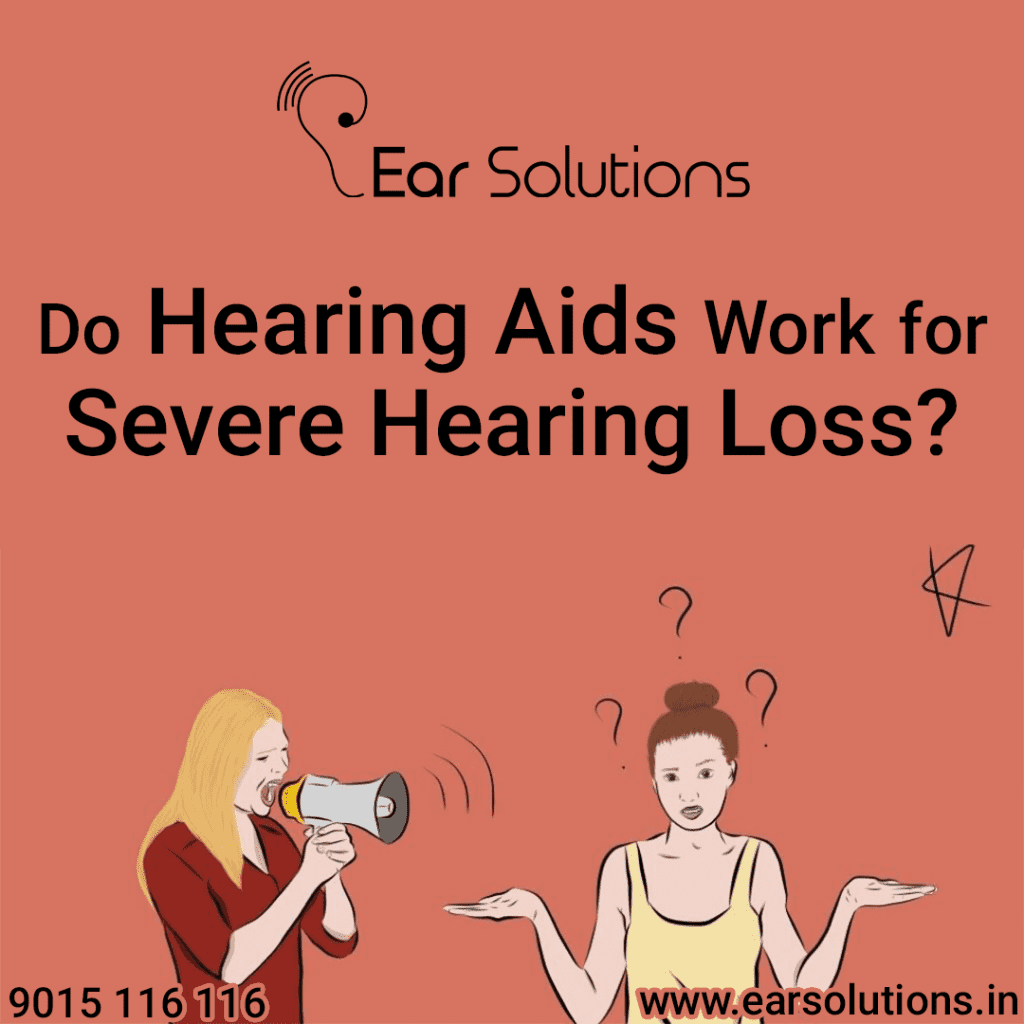
Hearing loss can be a challenging condition to deal with, especially when it comes to severe hearing loss. Severe hearing loss refers to hearing loss where individuals struggle to hear sounds below 70 decibels, which can affect their ability to hear everyday sounds, including conversations, alarms, and traffic. While severe hearing loss can be a debilitating condition, the good news is that hearing aids can help.
Many people with severe hearing loss are hesitant to try hearing aids, believing that they may not work for them. However, with advances in hearing aid technology, even those with severe hearing loss can benefit from using hearing aids.
In this article, we will explore how hearing aids can work for individuals with severe hearing loss.
How Hearing Aids Work
Before we delve into how hearing aids can help individuals with severe hearing loss, it’s essential to understand how hearing aids work.
Hearing aids work by amplifying sounds that individuals struggle to hear. The device consists of three main parts: a microphone, an amplifier, and a speaker. The microphone picks up sounds from the surrounding environment, which are then amplified by the amplifier. The amplified sounds are then sent to the speaker, which delivers the sound into the ear.
Hearing aids can come in different styles and sizes, including behind-the-ear (BTE), in-the-ear (ITE), and completely-in-canal (CIC), among others. The type of hearing aid a person chooses often depends on the severity of their hearing loss, the shape of their ear, and their lifestyle.
How Hearing Aids Help with Severe Hearing Loss
Individuals with severe hearing loss often struggle to hear everyday sounds and conversations, which can impact their quality of life. With hearing aids, individuals can experience improved communication, better social interactions, and increased confidence.
One of the ways hearing aids help with severe hearing loss is by amplifying sounds that individuals struggle to hear. By increasing the volume of sounds, hearing aids can help individuals with severe hearing loss to hear everyday sounds, including conversations, music, and television.
Hearing aids also come equipped with various features that can help individuals with severe hearing loss, including noise reduction, directional microphones, and frequency compression. These features work together to improve the clarity of sound and make it easier for individuals to distinguish speech from background noise.
For example, noise reduction technology helps to reduce background noise, making it easier for individuals to hear conversations in noisy environments. Directional microphones help to focus on the sound source, making it easier for individuals to hear conversations in crowded places like restaurants and cafes. Frequency compression helps to amplify sounds that individuals struggle to hear, making it easier for them to understand speech.
Additionally, hearing aids can help individuals with severe hearing loss to maintain their independence and quality of life. With improved communication and increased confidence, individuals can continue to participate in social activities, work, and hobbies.
Factors to Consider when Choosing Hearing Aids for Severe Hearing Loss
When choosing hearing aids for severe hearing loss, there are several factors to consider, including:
- Power and Amplification: Hearing aids for severe hearing loss require more amplification and power than hearing aids for mild to moderate hearing loss. The hearing aid must be powerful enough to amplify sounds that individuals with severe hearing loss struggle to hear.
- Style and Size: The style and size of the hearing aid will depend on the severity of the hearing loss, the shape of the ear, and lifestyle. For severe hearing loss, behind-the-ear (BTE) and in-the-ear (ITE) hearing aids are often recommended as they can provide the necessary amplification.
- Features: Hearing aids come with various features that can help individuals with severe hearing loss. Some of these features include noise reduction, directional microphones, frequency compression, and feedback management.




